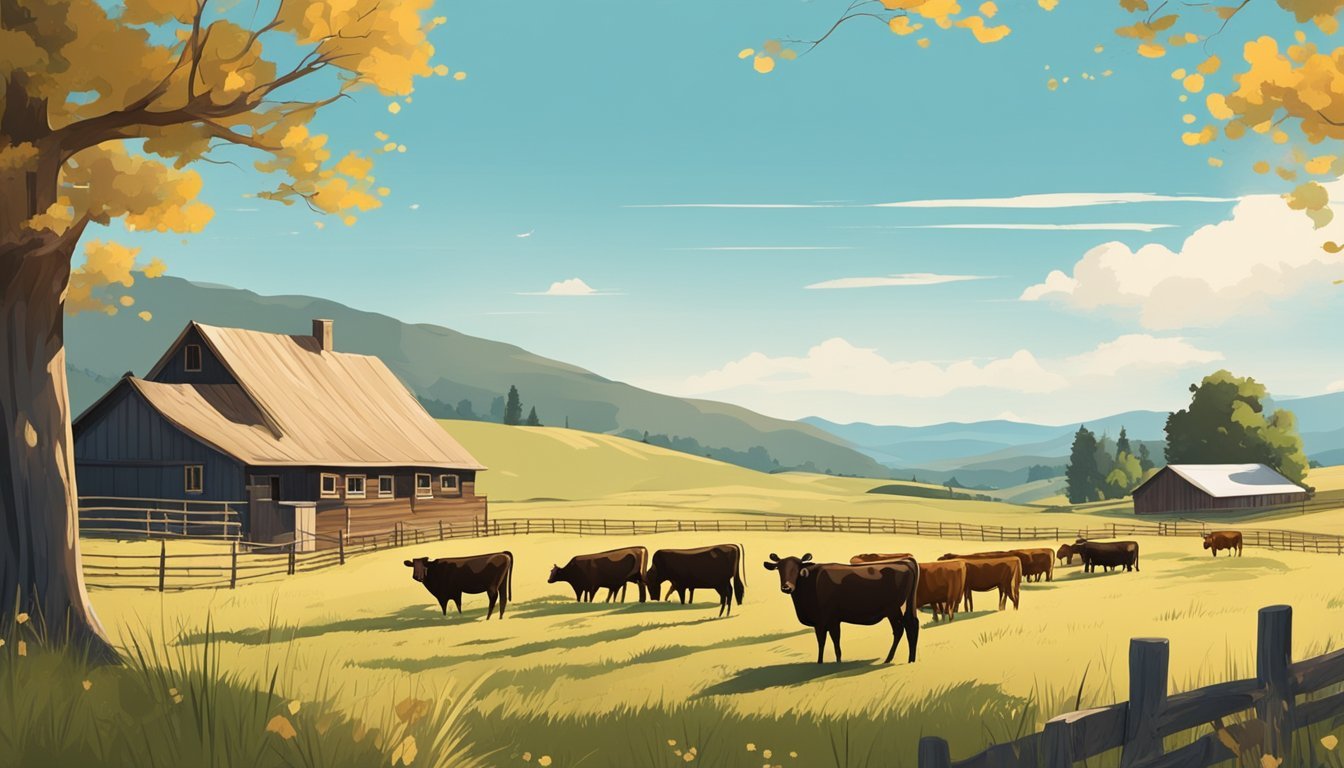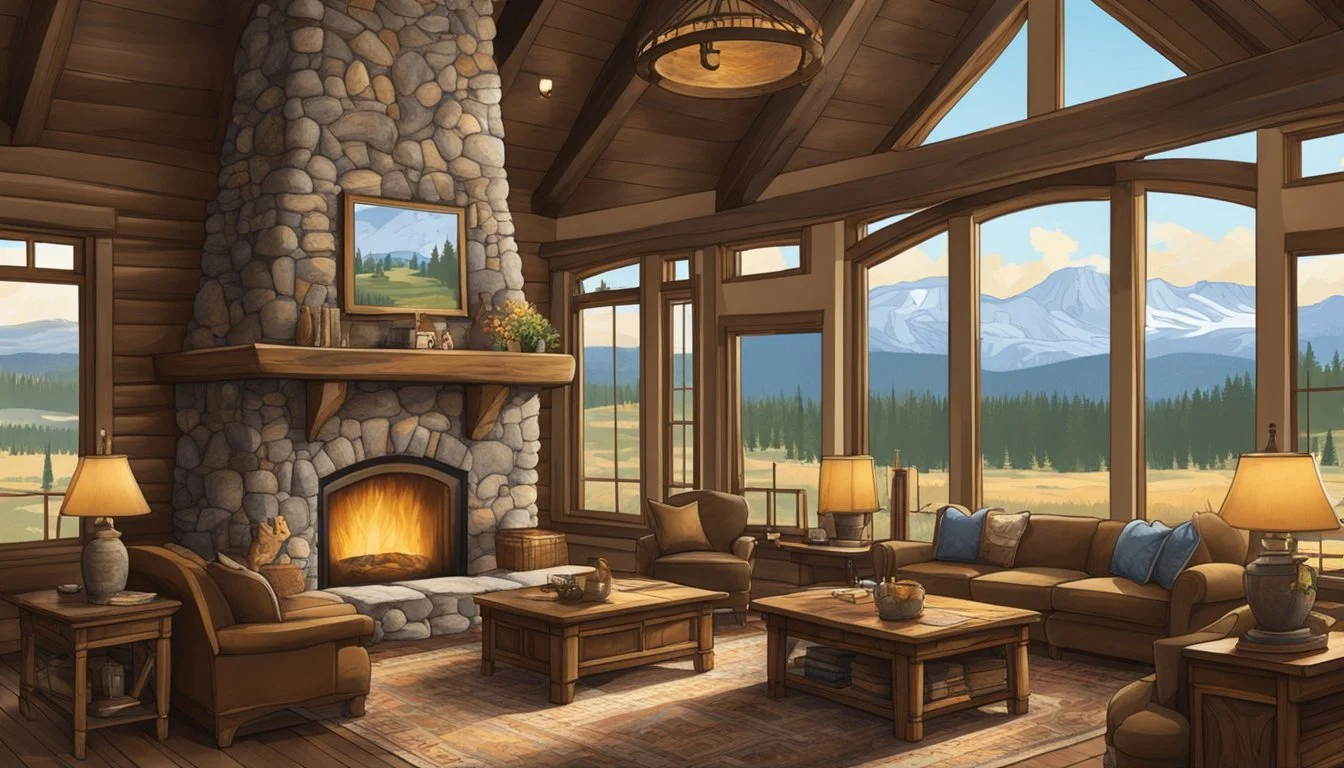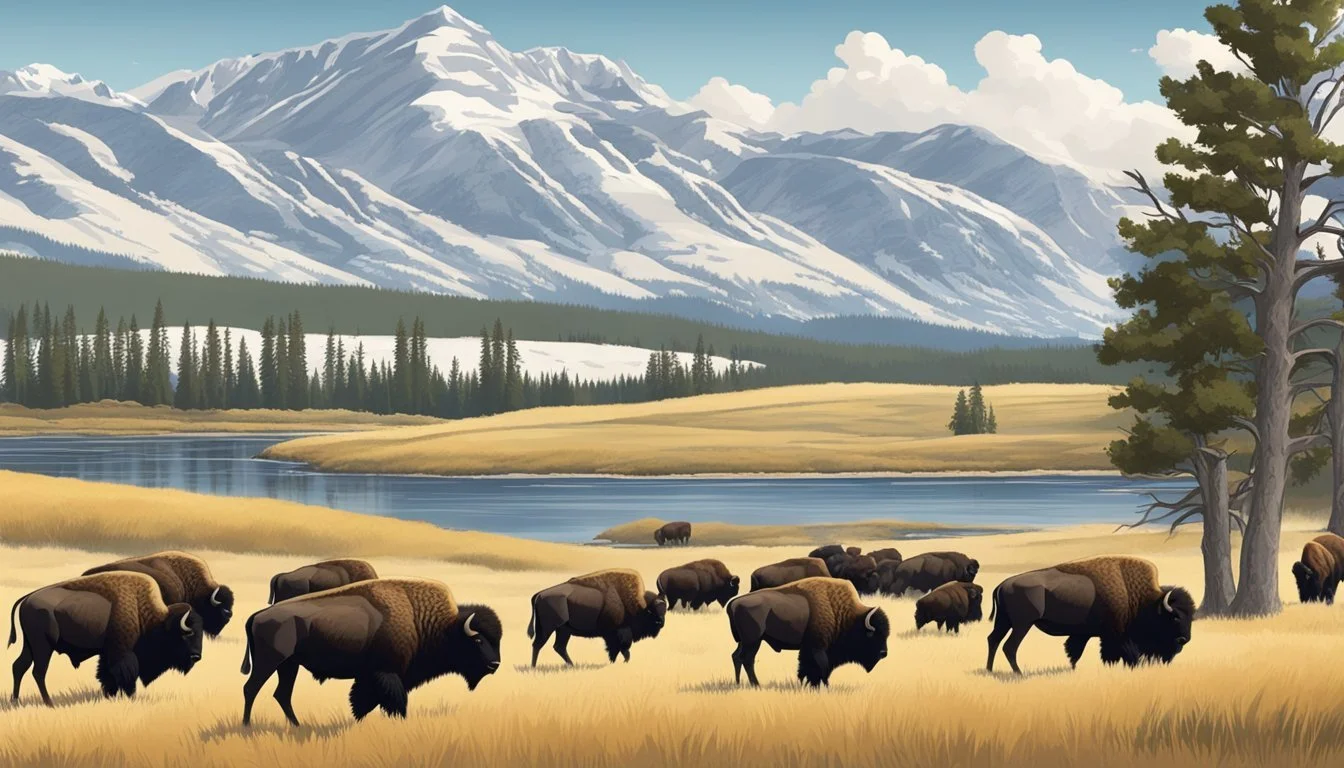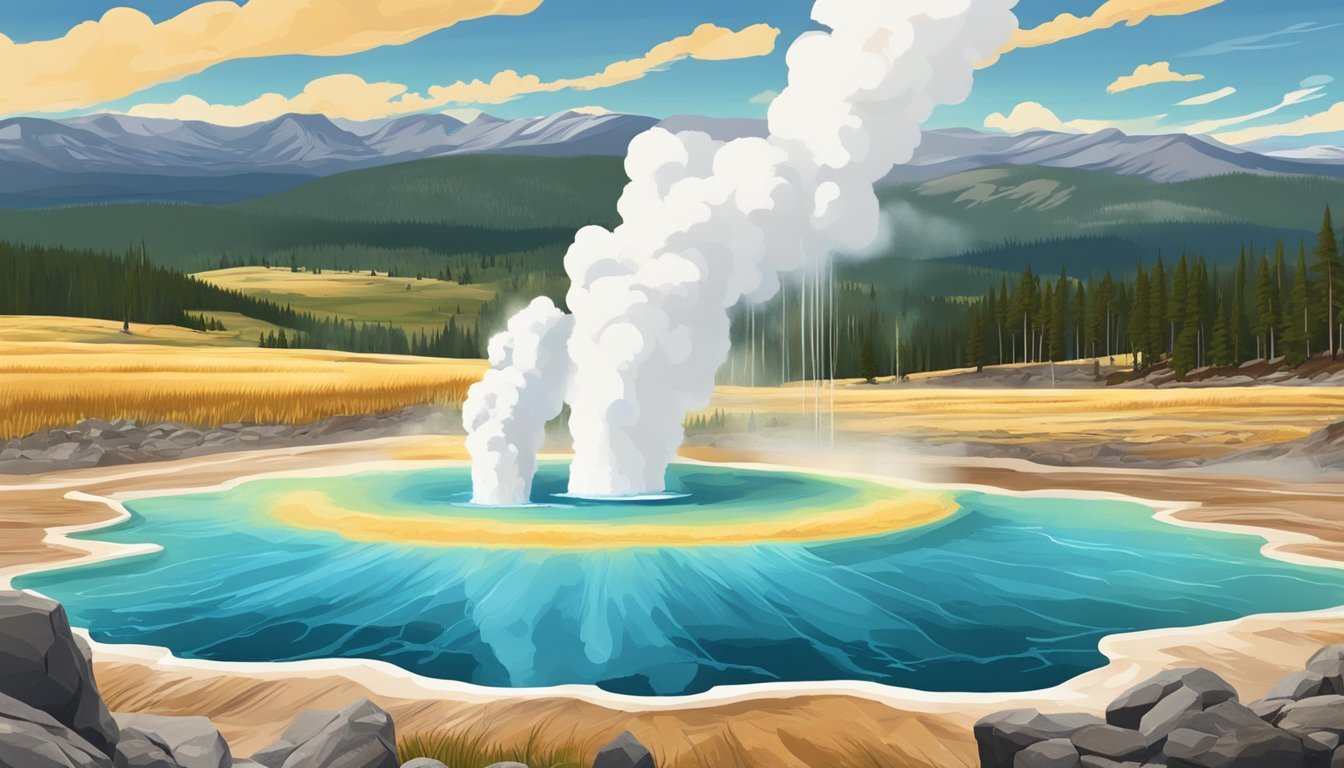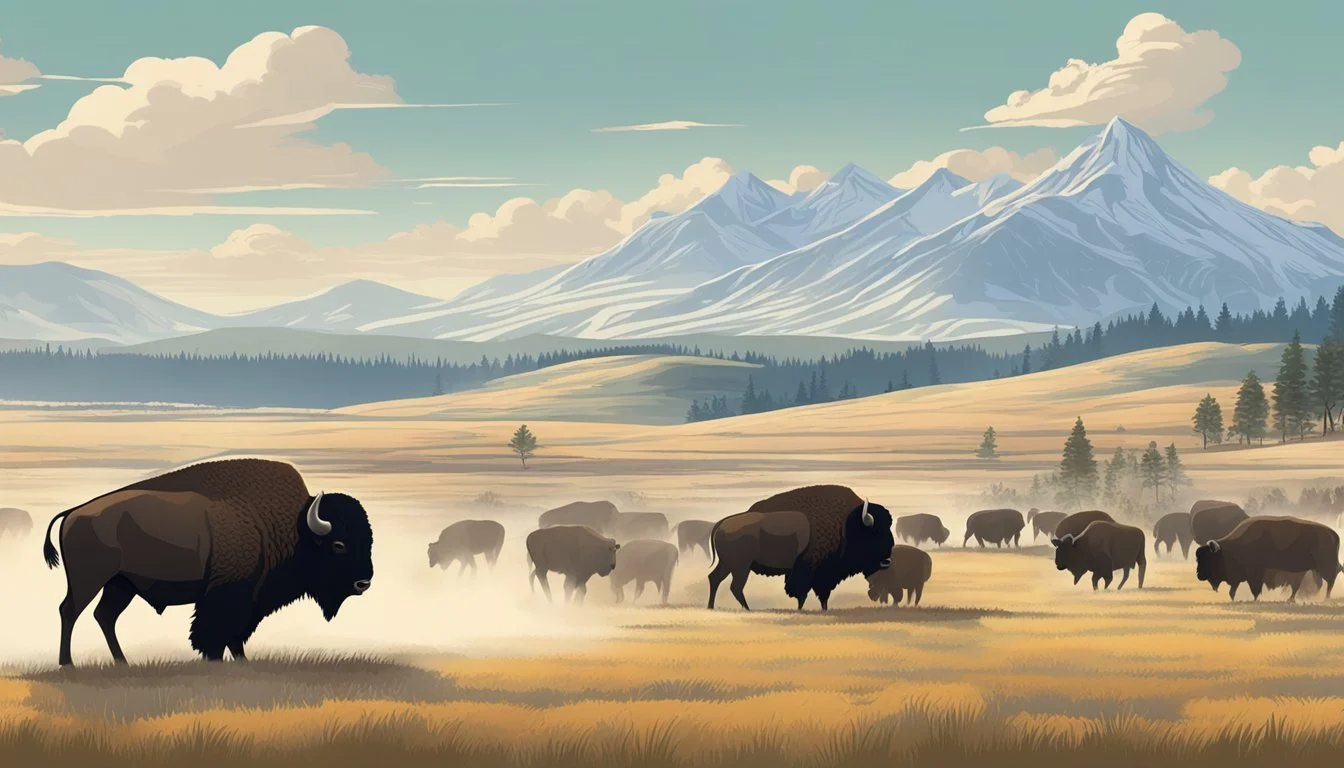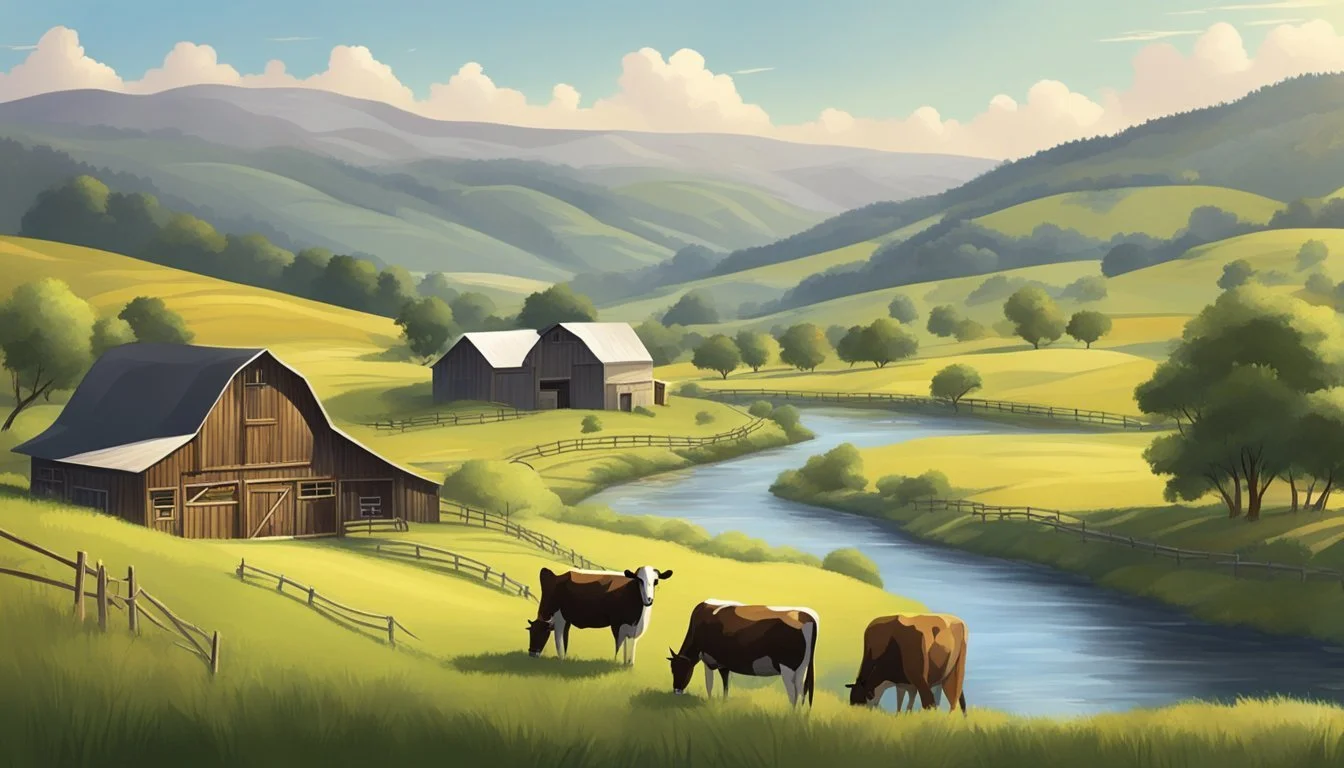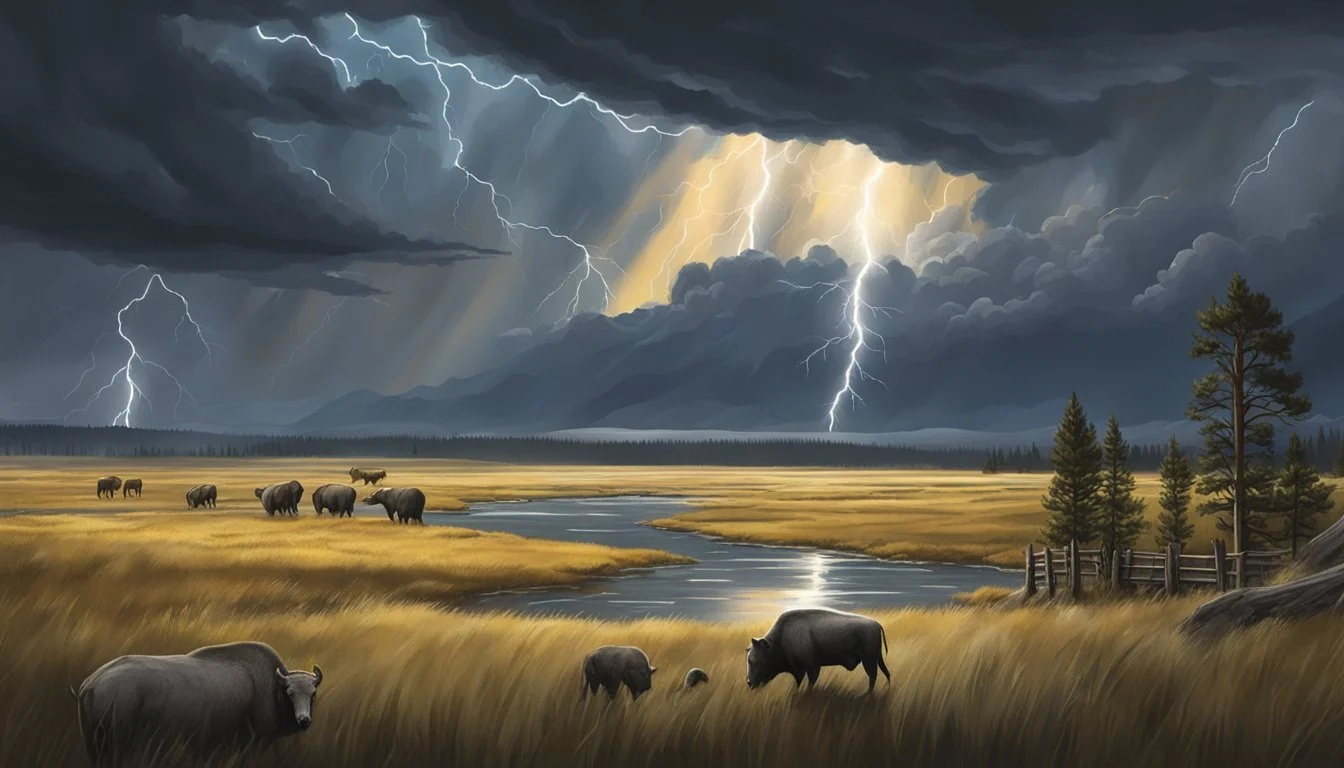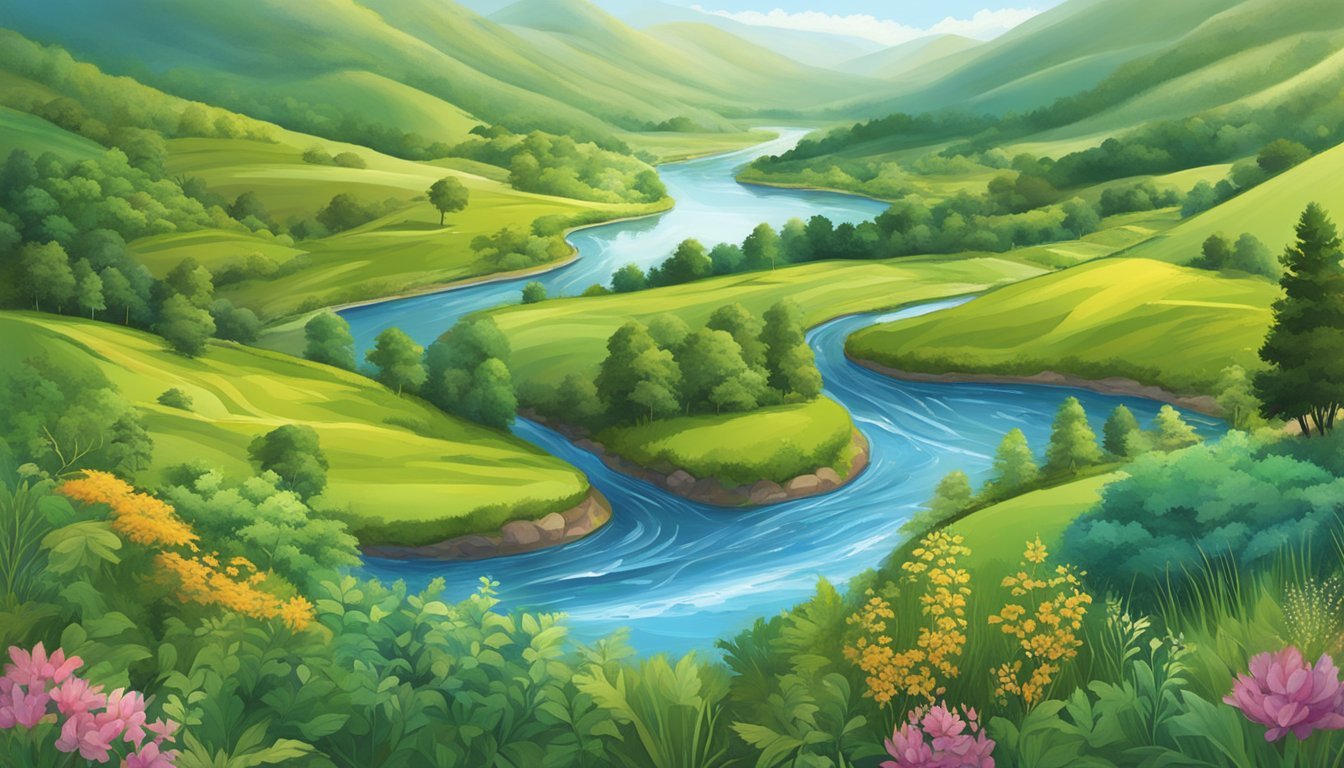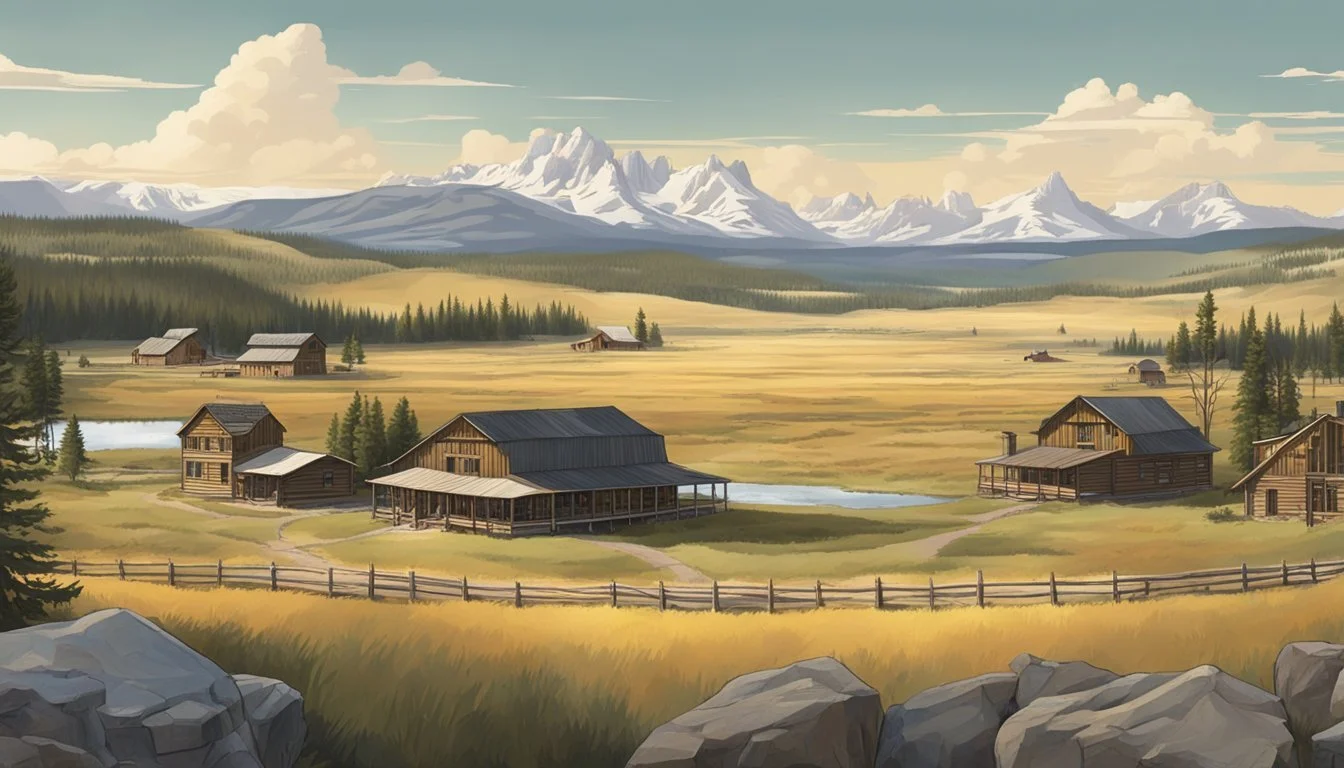15 Things You Didn't Know About the Yellowstone Ranch
Secrets of the Iconic Montana Property
Yellowstone Ranch, the iconic setting of the hit TV series "Yellowstone," has captured the imagination of viewers worldwide. This sprawling Montana cattle ranch serves as both a filming location and a real working ranch, blending fiction with reality in a unique way.
The Yellowstone Ranch holds many secrets and fascinating details that even die-hard fans of the show may not be aware of. From its history and operations to behind-the-scenes tidbits, there's much to discover about this captivating property. This article delves into 15 lesser-known facts about the Yellowstone Ranch, offering insights that will enhance viewers' appreciation of the series and the real-life location that brings it to life.
1) Dutton Family History
The Dutton family's legacy in Montana began with James Dutton, who relocated his family from Fort Worth, Texas during the Western Expansion. Originally from New York, James had previously settled in Tennessee before poverty drove him westward.
James founded the Yellowstone Dutton Ranch, which would grow to become the largest ranch in the United States. The ranch's location near Yellowstone National Park provides a stunning backdrop for the family's ongoing story.
John Dutton III later became the patriarch of the family, continuing to expand and protect the ranch's vast holdings. The Duttons' connection to the land runs deep, spanning multiple generations.
While the Dutton family depicted in the television series "Yellowstone" is fictional, their story draws inspiration from real ranching families in Montana. The show portrays the challenges and conflicts faced by modern-day ranchers.
The Dutton ranch serves as both home and livelihood for the family, shaping their identities and driving their actions. Their history is intrinsically tied to the land they've worked for over a century.
2) Real-Life Cattle Operation
The Yellowstone Ranch depicted in the TV series is based on a real working cattle operation. Unlike the show's dramatic storylines, actual ranch life focuses on the day-to-day management of livestock and land.
Real cattle ranches require constant attention to animal health, grazing rotations, and maintenance of fences and facilities. Ranchers must carefully monitor market prices for cattle and adjust their operations accordingly.
Weather plays a crucial role in ranch operations. Drought, severe winters, or flooding can significantly impact livestock and pastures. Ranchers must be prepared to adapt their strategies to these unpredictable conditions.
Many working ranches also incorporate sustainable practices to preserve the land for future generations. This may include rotational grazing, water conservation efforts, and wildlife habitat management.
While the TV show glamorizes certain aspects of ranch life, the reality often involves long hours of physical labor and complex decision-making. Successful ranchers need a deep understanding of animal husbandry, land management, and business principles.
3) Authentic Western Filming
Yellowstone prides itself on delivering an authentic Western experience to viewers. The show's creators meticulously craft each scene to capture the essence of ranch life in Montana.
Many scenes feature real cowboys and ranchers performing everyday tasks. This lends a genuine feel to the series, as skilled horsemen and cattle handlers showcase their talents on screen.
The production team often films outdoors in natural settings, embracing the rugged landscapes of Montana and Utah. This choice enhances the show's visual appeal and authenticity.
Costume designers pay close attention to detail, ensuring characters wear appropriate Western attire. From worn cowboy boots to weathered hats, the clothing reflects the practical needs of ranch life.
The series also incorporates authentic ranch equipment and tools. Viewers can spot real-life farming implements, horse tack, and cattle-handling gear throughout the show.
By prioritizing authenticity in its filming approach, Yellowstone creates a immersive viewing experience that resonates with audiences seeking a genuine portrayal of modern Western life.
4) Rip Wheeler's Real Life
Cole Hauser portrays the character of Rip Wheeler in Yellowstone. Born in Santa Barbara, California, Hauser comes from a family with deep roots in the entertainment industry.
Hauser's acting career began long before Yellowstone. He has appeared in numerous films and television shows since the 1990s, including "Dazed and Confused" and "Good Will Hunting."
Unlike his character Rip, Hauser is happily married to Cynthia Daniel, a photographer and former actress. The couple has three children together.
In real life, Hauser is not a ranch hand but has embraced horseback riding for his role in Yellowstone. He spent time learning to ride and handle horses to authentically portray Rip Wheeler.
Hauser's dedication to the role extends beyond physical preparation. He has spoken about how he connects with Rip's loyalty and protective nature, drawing from his own experiences as a father and husband.
While Rip Wheeler's life is fraught with drama and violence, Cole Hauser leads a comparatively quiet life off-screen, focusing on his family and career.
5) Famous House Interior
The Yellowstone Ranch house interior is a blend of rustic charm and luxury. Its 5,000 square foot log mansion serves as the backdrop for many pivotal scenes in the show.
The set decorator, Carla Curry, worked meticulously to create an authentic Western atmosphere. Rich wood tones dominate the space, complemented by leather furniture and Native American-inspired textiles.
The great room features a grand stone fireplace, serving as a focal point for family gatherings. Large windows offer breathtaking views of the surrounding Montana landscape.
John Dutton's office is adorned with vintage maps, family heirlooms, and Western memorabilia. This space reflects the character's deep connection to the land and his family's legacy.
The kitchen combines modern amenities with a rustic aesthetic. It features a large island, perfect for casual family meals and discussions.
While much of the interior is created for filming, it seamlessly blends with the authentic ranch architecture. This attention to detail helps bring the Dutton family's world to life for viewers.
6) Wildlife Stakes
The Yellowstone Ranch is home to diverse wildlife populations that play a crucial role in the ecosystem. Large mammals like bison, elk, and wolves roam freely across the expansive property.
Ranch operations must carefully balance cattle grazing with wildlife conservation efforts. Fencing and grazing rotations help protect sensitive habitat areas while still allowing for ranching activities.
Predator management is an ongoing challenge. Ranch hands work to deter wolves and grizzly bears from preying on livestock through non-lethal methods when possible.
The ranch serves as an important wildlife corridor, connecting protected habitats in Yellowstone National Park with surrounding wilderness areas. This allows for genetic diversity and natural migration patterns.
Hunting is permitted on parts of the ranch during designated seasons. This helps control wildlife populations and provides additional income. Conservation easements ensure key habitat areas remain protected long-term.
7) Oldest National Park Tie
Yellowstone Ranch shares a unique connection with the national park that bears its name. Yellowstone National Park holds the distinction of being America's first national park, established in 1872.
This historic designation creates a special bond between the ranch and the park. Both entities are steeped in the rich history and natural beauty of the region.
The ranch's proximity to the park allows visitors to experience the same breathtaking landscapes and diverse wildlife that inspired the creation of the national park system. This connection offers a glimpse into the area's past and present.
Visitors to Yellowstone Ranch can appreciate the same stunning vistas and ecological wonders that have drawn people to the region for centuries. The ranch's location provides easy access to the park's geothermal features, wildlife, and scenic beauty.
This tie to America's oldest national park enhances the ranch experience, offering guests a chance to explore both the working ranch and the protected wilderness nearby. It creates a unique blend of Western heritage and natural conservation.
8) Costume Design Secrets
The costume design for Yellowstone plays a crucial role in bringing the characters to life. Johnetta Boone, the show's costume designer since Season 2, focuses on creating authentic Western looks with modern touches.
Boone takes an individualized approach for each character, ensuring their outfits reflect their personalities and roles within the Dutton family. This attention to detail helps distinguish characters even when they share scenes together.
The show's wardrobe blends traditional cowboy attire with contemporary elements. This unique combination creates a style that resonates with viewers while staying true to the ranch setting.
John Dutton's wardrobe evolves as his character progresses from Livestock Commissioner to Governor. His outfits transition from casual Western wear to more formal black business suits, reflecting his changing responsibilities.
Accuracy is a top priority for the costume team. They thoroughly research ranch life and Western fashion to ensure the characters' clothing is both stylish and functional for their daily activities on the Yellowstone ranch.
9) Kevin Costner's Involvement
Kevin Costner plays a central role in "Yellowstone" as John Dutton, the patriarch of the Dutton family. His portrayal of the powerful rancher has been widely praised by critics and fans alike.
Costner's commitment to the show extends beyond his on-screen performance. He reportedly earns $500,000 per episode, reflecting the value he brings to the production.
The actor's musical talents have also been incorporated into "Yellowstone." Costner's band, Kevin Costner & Modern West, has written and performed songs for the show's soundtrack.
Costner's involvement in "Yellowstone" has helped bring authenticity to the series. His experience in Western films and personal interest in ranch life contribute to the show's realistic portrayal of modern ranching.
The actor's star power has undoubtedly played a role in attracting viewers to "Yellowstone." His presence has helped establish the show as a major player in contemporary television drama.
10) Filming Locations Diversity
The Yellowstone series showcases a variety of stunning landscapes across multiple states. While Montana serves as the primary setting, the show's filming locations extend beyond its borders.
Utah plays a significant role in bringing the Yellowstone Ranch to life. The Chief Joseph Ranch in Darby, Montana, serves as the exterior of the iconic Dutton family home.
Texas also features in the show's production, adding to the diverse array of filming locations. This mix of states allows the series to capture a range of breathtaking vistas and terrain.
Glen's Cafe in Florence, Montana, appears in the show as a favorite spot of John Dutton. The cafe's inclusion highlights the production's use of authentic local establishments.
The series' use of multiple filming locations across different states contributes to its visual appeal. It allows viewers to experience the grandeur of the American West through a variety of landscapes.
11) Historical Inaccuracies
The Yellowstone Ranch depicted in the TV series takes some creative liberties with historical accuracy. While the show strives to capture the essence of ranch life, certain elements are dramatized for entertainment purposes.
The Dutton family's long-standing ownership of the ranch stretching back to the 19th century is likely exaggerated. Most large Montana ranches have changed hands multiple times over the decades.
The portrayal of conflicts with Native American tribes oversimplifies the complex historical relationships between ranchers and indigenous peoples in the region. Real interactions were often more nuanced.
Some of the ranch structures and equipment shown are not entirely period-accurate for the timeframes depicted. Modern touches occasionally appear in scenes set in earlier eras.
The level of violence and dramatic conflicts on the ranch is heightened for dramatic effect. Daily life on a working cattle ranch was typically less eventful than portrayed on screen.
12) Stuntman Stories
Yellowstone's stunt coordinator Jason Rodriguez plays a crucial role in bringing the show's action sequences to life. He works closely with producers, directors, and actors to create realistic and pulse-pounding stunts.
The show's stunts range from horseback riding and roping to intense fight scenes. Rodriguez and his team meticulously plan and execute each sequence to ensure both safety and authenticity.
Cast members Jen Landon and Jefferson White have spoken about their experiences performing stunts on set. They've highlighted the importance of their equestrian skills in bringing their characters to life.
Many of the show's memorable action scenes involve horseback riding. The stunt team works to make these sequences look natural and effortless, despite the considerable skill required.
Fight scenes are another area where the stunt team shines. They choreograph brawls that appear spontaneous and raw, capturing the rugged spirit of the Yellowstone Ranch.
13) Trivia about Cast
Kevin Costner, who plays John Dutton, initially turned down the role of the Yellowstone patriarch. He changed his mind after reading the script and meeting with creator Taylor Sheridan.
Kelly Reilly, who portrays Beth Dutton, is actually British. She perfected her American accent for the role through intensive dialect coaching.
Luke Grimes, who plays Kayce Dutton, is a talented musician in real life. He occasionally performs country music when not filming the show.
Cole Hauser, known for his role as Rip Wheeler, comes from a family with a rich Hollywood history. His great-grandfather founded Warner Bros. Studios.
Forrie J. Smith, who portrays Lloyd Pierce, is a real-life cowboy. He brings authentic ranching experience to his role on the show.
Ryan Bingham, who plays Walker, is a Grammy and Oscar-winning musician. He has contributed original songs to the Yellowstone soundtrack.
Kelsey Asbille, who portrays Monica Dutton, studied at Columbia University while filming the show. She balanced her acting career with her academic pursuits.
14) Weather Challenges
The Yellowstone Ranch faces extreme weather conditions throughout the year. Montana's climate can be unforgiving, with harsh winters and unpredictable summers.
Heavy snowfall often blankets the ranch during winter months, making daily operations challenging. Temperatures can plummet well below freezing, posing risks to livestock and ranch hands alike.
Spring brings its own set of challenges, with rapid snowmelt causing potential flooding. This can damage fences, roads, and other ranch infrastructure.
Summer heat waves can stress cattle and dry out grazing lands. Wildfires are a constant threat during hot, dry periods, requiring vigilance from ranch staff.
Sudden storms and high winds are common, potentially damaging buildings and equipment. These weather events can disrupt ranch activities and require quick responses from the crew.
Adapting to these diverse weather challenges is crucial for the ranch's success. The Dutton family and their employees must remain prepared for any meteorological curveball Montana might throw their way.
15) Behind-the-Scenes Tales
The Yellowstone ranch scenes are filmed on location at the real Chief Joseph Ranch in Darby, Montana. This authentic setting provides a genuine backdrop for the Dutton family's adventures.
Cast members have embraced ranch life during filming. Some actors have even learned to ride horses and perform their own stunts, adding authenticity to their performances.
The show's attention to detail extends to the costumes. Wardrobe designers work meticulously to ensure each character's outfit reflects their personality and role on the ranch.
Music plays a significant role in Yellowstone. The cast's musical talents have been incorporated into the show, with some actors performing songs on-screen.
Filming in Montana's unpredictable weather presents challenges. The crew often has to adapt quickly to changing conditions, sometimes rescheduling scenes at short notice.
The show's success has led to unexpected fan interactions. Cast members have reported encounters with enthusiastic viewers who mistake them for their characters in real life.
History of the Yellowstone Ranch
The Yellowstone Ranch has a rich history dating back to the late 19th century. Its development has been shaped by pioneering settlers, cattle operations, and the surrounding natural landscape.
Origins and Early Development
The area now known as Yellowstone Ranch was first homesteaded in 1880. Initially called the Shelton Ranch, it was established by early settlers seeking to build a life in the rugged Montana territory. The ranch's prime location in a picturesque valley made it ideal for cattle grazing and agriculture.
In its early years, the ranch faced challenges typical of frontier life. Harsh winters, conflicts with Native American tribes, and the difficulties of establishing a working farm in remote terrain tested the resolve of its founders. Despite these obstacles, the ranch grew steadily.
Significant Milestones
The ranch's history intersects with notable events in American westward expansion. In 1877, Chief Joseph and the Nez Perce tribe passed through the property during their flight from the U.S. Army. This historic trail runs just west of the current main lodge.
Over time, the ranch expanded its operations and land holdings. It transitioned from a small homestead to a large-scale cattle operation. The construction of key structures like barns, corrals, and additional housing marked its growth.
By the early 20th century, the ranch had become a significant player in Montana's cattle industry. Its vast acreage and strategic location helped it weather economic ups and downs that challenged smaller operations in the region.
The Unique Ecosystem of the Ranch
The Yellowstone Ranch boasts a diverse and intricate ecosystem. Its varied landscapes support a wide array of plant and animal species, while ongoing conservation efforts aim to preserve this natural wonder.
Flora and Fauna
The ranch's ecosystem encompasses grasslands, forests, and wetlands. Native grasses like bluebunch wheatgrass and Idaho fescue dominate the prairies. Ponderosa pines and Douglas firs populate the forested areas.
Wildlife thrives on the ranch. Herds of elk and deer roam freely across the land. Predators such as wolves and grizzly bears maintain the ecological balance. Bald eagles and osprey nest near water sources.
The ranch's rivers and streams support various fish species, including cutthroat trout and mountain whitefish. These waterways also attract migratory birds like sandhill cranes and trumpeter swans.
Conservation Efforts
The Dutton family implements sustainable ranching practices to protect the land. They rotate grazing areas to prevent overuse and maintain soil health. Fencing is strategically placed to allow wildlife movement while protecting livestock.
Water conservation is a priority on the ranch. The family has invested in efficient irrigation systems and works to restore riparian areas along streams. They also partner with local conservation groups to monitor water quality.
Efforts to combat invasive plant species are ongoing. Ranch staff regularly remove noxious weeds and replant native vegetation. Wildlife corridors are maintained to ensure habitat connectivity across the vast property.
Cultural and Historical Significance
The Yellowstone Ranch holds profound cultural importance and has shaped the heritage of the surrounding region. Its legacy intertwines with local traditions and has left an indelible mark on the area's identity.
Role in Local Heritage
The Yellowstone Ranch stands as a testament to the rugged spirit of the American West. Established in the late 19th century, it has been a cornerstone of local ranching culture for generations. The ranch's vast acreage has preserved traditional ranching practices, including cattle drives and horseback riding.
Ranch hands have passed down skills and stories, creating a living museum of Western heritage. Annual events like rodeos and cattle auctions held at the ranch draw visitors from across the country, showcasing the enduring appeal of cowboy culture.
Influence on Regional Culture
Yellowstone Ranch's influence extends far beyond its fences. It has inspired countless works of art, literature, and music celebrating the cowboy way of life. Local artists often depict the ranch's sweeping vistas and iconic barns in their paintings and photographs.
The ranch has also played a role in regional economic development. Its operations have supported local businesses and contributed to the area's tourism industry. Many restaurants and shops in nearby towns feature ranch-inspired decor and menus, reflecting the pervasive impact of Yellowstone Ranch on the local cultural landscape.



